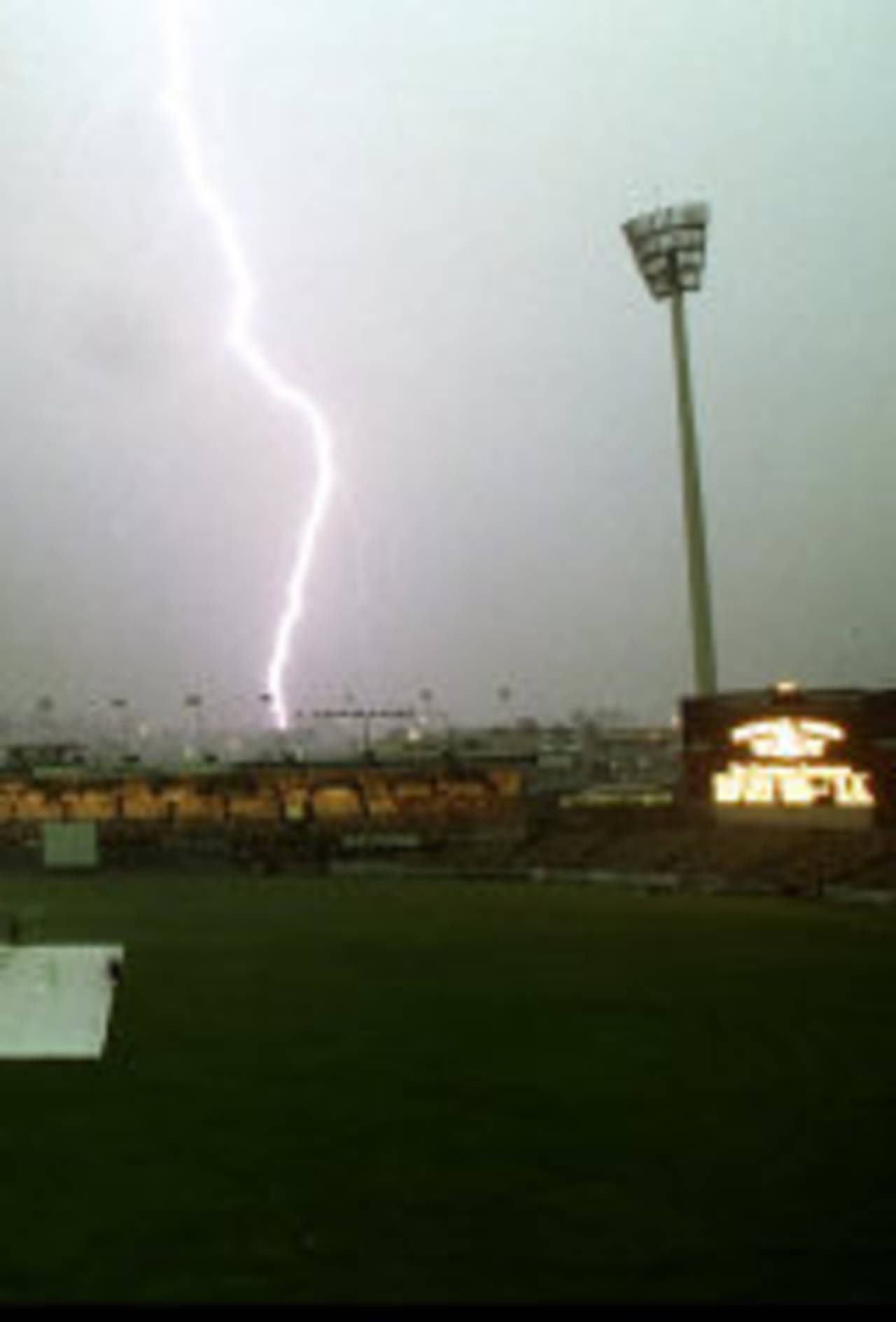It never rains...
Rain here was always a phantom of English, and cricketing, imagination
Gideon Haigh
25-Feb-2013

Getty Images
Text messages began arriving from friends in England about 6am. Could I stick my hand out the window and check for raindrops? Alas, the curtains parted to reveal a cloudless sky. Weather in Queensland doesn’t have the famous consistency of that experienced in the Pennines, but rain here was always a phantom of English imagination, based more on the electrical storm that curtailed a one-sided Ashes Test eight years ago than on instinctive feeling for local meteorology.
Trusting in the efficacy of a timely rain these days, too, is a little like believing in the Cottingley Fairies. Rain seldom exerts the influence on Tests as of yore. Games unfold so speedily, and so frequently involve mismatches, that even a lost day is insufficient to make avert the inevitable. The last Test verifiably ruined by rain was the knife-edge contest between Australia and India at Chennai just over two years ago. It wasn’t rain that held Australia up at the Oval in 2005 but bad light, thanks to the fixture’s lateness in the summer. Mind you, ‘Is It Cowardly to Pray for Bad Light?’ (2005) wouldn’t have made such an apt title for Rob Smyth’s delicious book.
Brisbane used to have fabulous reputation for rain, the Ashes Tests of 1928, 1936, 1946 and 1950 spiralling down the drain for whomever was the butt of the conditions. So farcical was the last, featuring one day in which twenty wickets fell for 120 runs, that Marylebone requested Brisbane’s removal from the rota of Test match venues ‘for climatic and financial reasons’; the Australian Board of Control for International Cricket insisted that the Gabba remain, ‘in the interests of Australian cricket’. These interests were well served when Australia, under pitiless sun, won the next Test there by an innings and 154 runs.
There has been some harking back to that Test in the last week, the Sunday Times among others invoking the example of Frank Tyson as a possible inspiration for Steve Harmison, the Douglas Corrigan of fast bowling. But the belief in the significance historical antecedents is perhaps even emptier than the trust in rain. How many series, and games, and careers, genuinely parallel another, in anything other than the most superficial senses? Cricket, of course, is a game replete with superstitions. But as one who has put his left pad on first for decades and still hardly made a run, I can assure you that they are not much help and little consolation.
Gideon Haigh is a cricket historian and writer